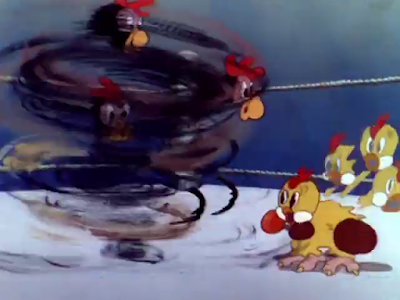I wonder how often Jack drank grasshoppers. I don’t think I know anyone who has.
Benny Finds Life Easier
Comedian Goes On His Successful Way
By Earl Wilson
HOLLYWOOD — Jack Benny, natty in shorts, leaned back restfully puffed his cigar millionairishly, and kept quiet for a moment when I tactlessly mentioned that TV's so difficult it’s chasing comedians off the air.
“For me-e-e-e,” he shrugged after an appropriate elapse of time, “it’s easier than radio — maybe because I like it.”
“Oh sure,” I hastily apologized. “You’re doing well and so is Groucho and George Burns.”
“The old guys,” he nodded grimly. “Just us old guys. How about Phil Silvers? Phil will always be good at anything.”
And so I gradually saw that Jack’s denying that TV’s a monster — to him — and that it’s killing off comedians.
 “Some of the public is indignant about Sid Caesar going off the air,” I said.
“Some of the public is indignant about Sid Caesar going off the air,” I said.“If the public is so indignant why didn’t it watch him and buy the sponsor’s products?” Jack looked across at me and asked if I wanted a cigar. He was off to buy one. He came back and ordered us both a grasshopper as we sat at a back table. Jack was almost unnoticed.
“The trouble with some comedy shows is that they don’t have any particular characterization.” He sipped the grasshopper. “Just like a soft drink isn’t it?” “I give Bob Hope an awful lot of credit,” he resumed.
“Every time he does a show it’s like a Broadway revue. With me, I’ve always got a lot of things going for me.
“The age, the cheapness, the concerts." He looked up with lively interest. “I did a Carnegie Hall concert and I got two programs out of it!”
It’s so true. I'd seen him do his night club act in Las Vegas at the Flamingo where he had used all those gimmicks.
It’s Easy Money
“Sure I’m working night clubs now,” he’d said. “Where else can you pick up $200 this easy? I asked Al Pavin, the owner here, for $40,000 a week, thinking he would turn me down — and he did. It’s not that I’m stingy. I throw money away — not too far.”
That was the way it went and every one got a howl. Jack was working with four or five jokes which seem to get funnier every time he does them.
“Have you added any new traits to this humorous character, Jack Benny?” I asked.
“Just the concerts. Did you know I bought a real, real good Stradivarius? I imagine it’s worth about $30,000.”
“Do you think you play better with it?”
“Well it sounds better. It’s about 230 years old. I practice with it but I didn’t use it in my night club act, Zeke Benny and his Beverly Hillbillies.”
“I don’t know much about concert music,” I said.
“I don’t either,” Jack said, “but I give concerts anyway.”
That was the subject that interested Jack most.
“You know I practically dropped the fiddle for 40 years,” he said. “Mike Todd said a very sage thing about my fiddling.
“It’s not that I have the gall to play in Carnegie Hall, it’s the pathos that I think I’m good enough when there isn’t a violinist in the orchestra who isn’t 80 times as good as I am.”
Looking excited all over again, he said, “I’m going to play London too — the Royal Festival Hall. I’ll have to make a special trip.”
“Do you keep practicing all the time?”
“That’s the terrible part of it,” Jack shrugged. “I have to practice to play lousy.”

















































